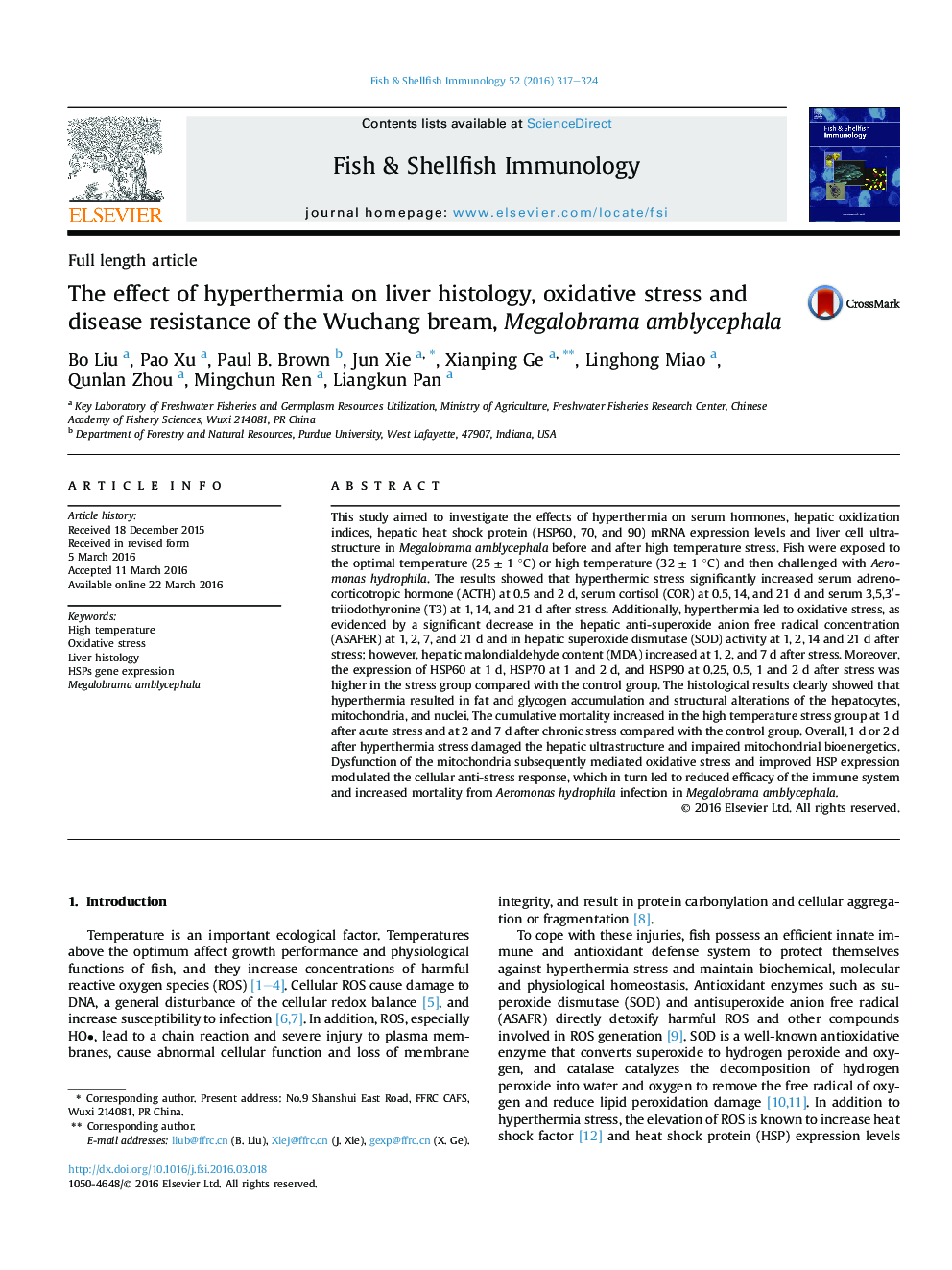| کد مقاله | کد نشریه | سال انتشار | مقاله انگلیسی | نسخه تمام متن |
|---|---|---|---|---|
| 2430872 | 1553622 | 2016 | 8 صفحه PDF | دانلود رایگان |

• Hyperthermia could damage hepatic mitochondrial ultrastructure.
• The dysfunction of the mitochondria mediated oxidative stress under hyperthermia.
• Hyperthermia could further reduce immune ability and improve mortality in fish.
This study aimed to investigate the effects of hyperthermia on serum hormones, hepatic oxidization indices, hepatic heat shock protein (HSP60, 70, and 90) mRNA expression levels and liver cell ultrastructure in Megalobrama amblycephala before and after high temperature stress. Fish were exposed to the optimal temperature (25 ± 1 °C) or high temperature (32 ± 1 °C) and then challenged with Aeromonas hydrophila. The results showed that hyperthermic stress significantly increased serum adrenocorticotropic hormone (ACTH) at 0.5 and 2 d, serum cortisol (COR) at 0.5, 14, and 21 d and serum 3,5,3′-triiodothyronine (T3) at 1, 14, and 21 d after stress. Additionally, hyperthermia led to oxidative stress, as evidenced by a significant decrease in the hepatic anti-superoxide anion free radical concentration (ASAFER) at 1, 2, 7, and 21 d and in hepatic superoxide dismutase (SOD) activity at 1, 2, 14 and 21 d after stress; however, hepatic malondialdehyde content (MDA) increased at 1, 2, and 7 d after stress. Moreover, the expression of HSP60 at 1 d, HSP70 at 1 and 2 d, and HSP90 at 0.25, 0.5, 1 and 2 d after stress was higher in the stress group compared with the control group. The histological results clearly showed that hyperthermia resulted in fat and glycogen accumulation and structural alterations of the hepatocytes, mitochondria, and nuclei. The cumulative mortality increased in the high temperature stress group at 1 d after acute stress and at 2 and 7 d after chronic stress compared with the control group. Overall, 1 d or 2 d after hyperthermia stress damaged the hepatic ultrastructure and impaired mitochondrial bioenergetics. Dysfunction of the mitochondria subsequently mediated oxidative stress and improved HSP expression modulated the cellular anti-stress response, which in turn led to reduced efficacy of the immune system and increased mortality from Aeromonas hydrophila infection in Megalobrama amblycephala.
Journal: Fish & Shellfish Immunology - Volume 52, May 2016, Pages 317–324